Tired of your neighbors spying on you when you just want to relax outside in peace?
We want to make the most of our outdoor spaces, but that is pretty hard to do when you feel like you are the center of attention.
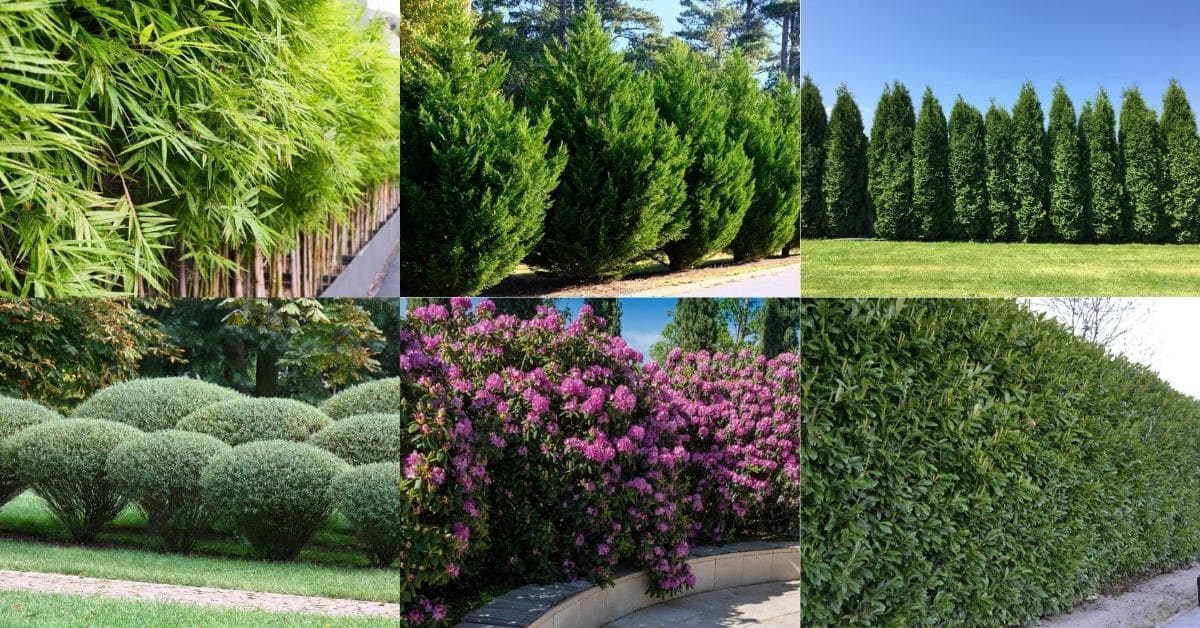
It is also not easy to enjoy your lawn and garden when you are just as distracted by your neighbors as they are by you!
In order for your outdoor space to feel like it is truly your own, you need it to be private and aesthetically pleasing.
One effective way to increase the privacy in your lawn or garden while also enhancing its appearance is to plant some fast-growing shrubs and trees as privacy hedges.
Jump to:
- What are the Benefits of Privacy Hedges?
- Top Fastest Growing Shrubs for Privacy
- 1. Skip Laurel Shrub
- 2. Waxleaf Privet Hedge
- 3. Common Purple Lilac
- 4. Lemon Lights Azalea Shrub
- 5. Oakleaf Hydrangea Shrub
- 6. Gulf Stream Heavenly Bamboo
- 7. Lavender Rhododendron Shrub
- 8. Arctic Willow
- 9. Endless Summer® Hydrangea Shrub
- 10. Camellia 'Shi-Shi Gashira' Shrub
- 11. Tri-Color Dappled Willow
- 12. White Pussy Willow
- 13. Austree Willow Hybrid Tree
- 14. Nellie Stevens Holly
- 15. Leyland Cypress Tree
- 16. Sunset Glow Bamboo
- 17. Edible Bamboo Plant
- 18. Thuja Green Giant
- 19. Full Speed A Hedge® American Pillar Arborvitae
- 20. Lombardy Poplar Tree
- 21. Eastern White Pine Tree
- 22. Moonglow Juniper
- 23. Robin™ Red Holly Tree
- 24. Canadian Hemlock
- 25. Dawn Redwood Tree
- 26. Vanderwolf's Pyramid Limber Pine
- 27. White Spruce Tree
- 28. Golden Bamboo
- 29. Black Bamboo
- 30. Multiplex Bamboo
- 31. Blue Cloak White Fir Tree
- 32. Brodie Eastern Red Cedar Tree
- What to Consider When Choosing Fast Growing Trees and Shrubs for Privacy
- Tree vs. Shrub: What is the Difference?
- Where to Get Fast Growing Privacy Trees and Shrubs
What are the Benefits of Privacy Hedges?
It takes care to grow privacy hedges, but you will discover it is worth it. Fast-growing trees and shrubs for privacy have many advantages. Some of these include the following:
Keep your nosy neighbors from watching you. Your lawn and garden are your property, just like the inside of your home. As such, you should feel free to use them as you would like without having to worry about what your neighbors might think. But that does not stop your neighbors from watching you when you are outdoors and making judgments (or complaints). Put a stop to it by screening yourself from view. Then, you can finally relax and feel at home in your own yard.
Avoid having to see your neighbors. Just as you don’t want your neighbors staring at you, do you really want to have to stare at them? If you are tired of feeling like you can’t get away from them, you can finally find a sense of seclusion with a privacy screen.
Screen out unwanted visual clutter. Along with your neighbors, there may be other things you don’t want to look at from your yard. Maybe you are tired of the sight of their messy back deck or dead grass. Or perhaps you are tired of watching cars drive by. Or maybe you would prefer not to have such a great view of the nearby overpass. With enough tall trees and hedges, you can block out these unwanted visuals.
Enjoy quieter. Auditory clutter can be just as annoying as visual clutter. Those cars racing by aren’t just unattractive—they are also loud. So is the overpass. So are your neighbors. But dense enough hedges can help block out some of the noise, making for a more peaceful atmosphere.
Protect yourself from sun and wind. If the wind is always gusting in your lawn and garden, it can be hard to enjoy a backyard barbeque. But with fast-growing, dense hedges, you can create an effective wind block. Your hedges also can provide you with some shady spots as well.
Keep your yard—and potentially your home—cooler. The USDA writes, “Did you know the net cooling effect of a young healthy tree is equivalent to ten room-size air conditioners operating 20 hours a day?” Wow, that is pretty astonishing! So, this is a cost-effective and eco-friendly way to help control the temperature on your property.
Increase the value of your home. Did you know that the enhanced curb appeal you get when you plant fast-growing trees can help you command a higher price if you ever decide to put your home on the market? In fact, according to the USDA, “Healthy, mature trees add an average of 10 percent to a property’s value.”
Bring birds to your yard. If you enjoy bird-watching, you can research fast-growing trees to plant those that will specifically help to attract your favorite feathered friends.
Top Fastest Growing Shrubs for Privacy
Now that you know what you need to think about when you are choosing fast-growing plants for your property, let’s go over some of the best options for privacy. We will start with fast-growing shrubs in this section and take a look at fast-growing trees in the next section.
You will notice that most of the options in the shrub department are more moderate than fast-growing. So, “fast” is a relative term here.
1. Skip Laurel Shrub
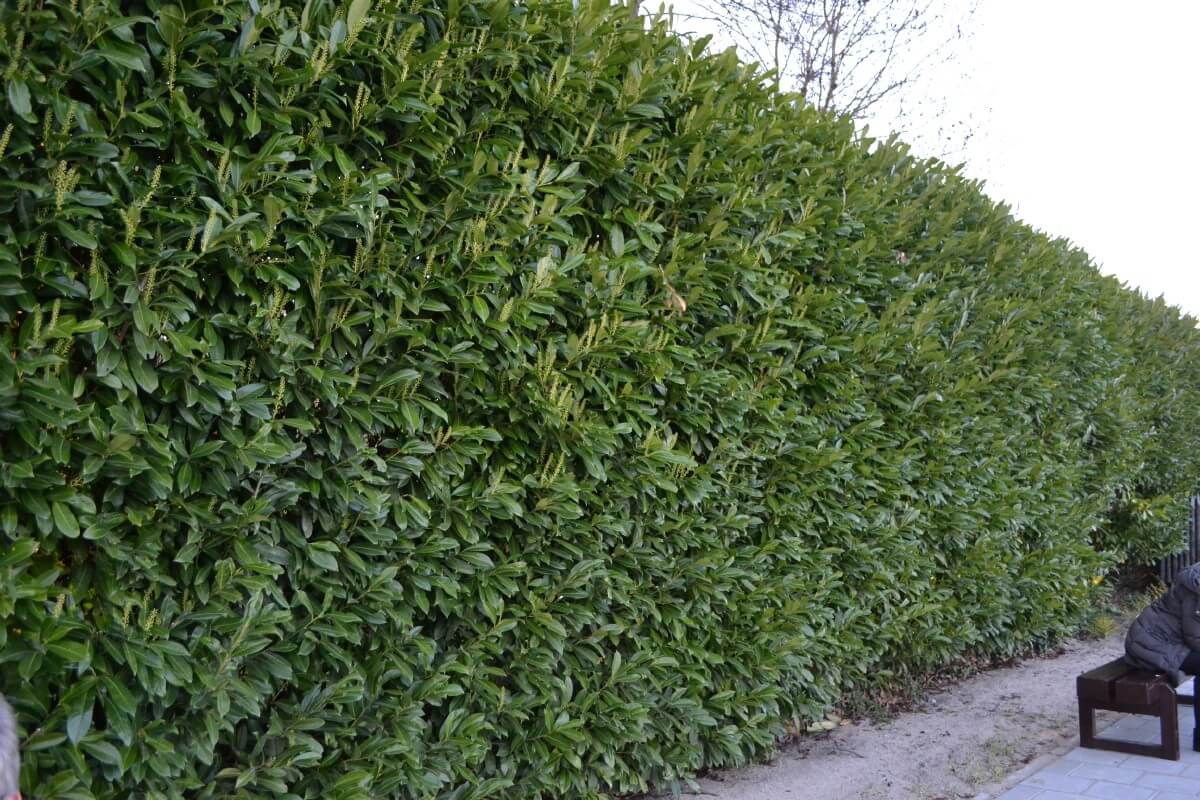
- Scientific name: Prunus laurocerasus
- Expected height: 10-18 feet
- Expected width: 5-7 feet
- Rate of growth: Moderate
- Sun requirement: Shade, partial or full
- Ideal growing zones: 5-10
While there are faster-growing shrubs out there, the two feet per year you can expect from this laurel shrub are pretty impressive. This plant has a lot of benefits. For one, it is super dense, making it ideal as a privacy screen.
For another, you can plant it in most locations and expect it to thrive with proper care. It can handle a lot of variation with respect to sunlight and soil quality, and it can withstand pollution. Dry climates won’t deter its growth, and even though it is an evergreen, deer aren’t into it. So, “resilient” is a great word to sum up, Skip Laurel and its benefits.
2. Waxleaf Privet Hedge
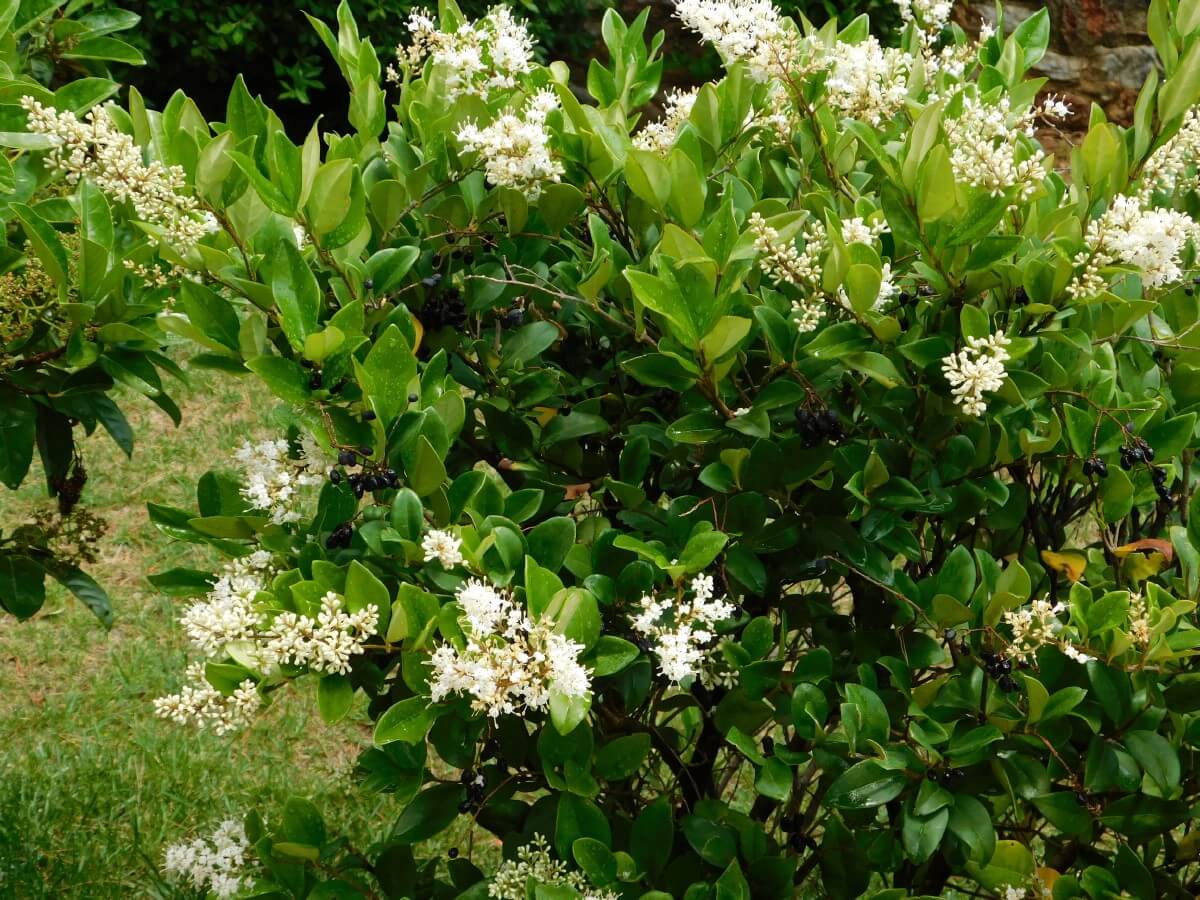
- Scientific name: Ligustrum japonicum 'Texanum'
- Expected height: 8-10 feet
- Expected width: 4-6 feet
- Rate of growth: Fast
- Sun requirement: Partial to full
- Ideal growing zones: 7-11
This shrub does best in the southern states and along the west coast. It also might do okay as far north as Virginia on the east coast, and maybe a bit beyond, but not really up in the New England region.
Indeed, it is a particularly good choice for planting along the coast since you may get a lot of wind off the water. The hedge can help block some of it off.
In terms of aesthetics, this is a classic, dense evergreen that can serve as a topiary if you want to sculpt it to your satisfaction. It also produces white flowers with a beautiful aroma.
3. Common Purple Lilac
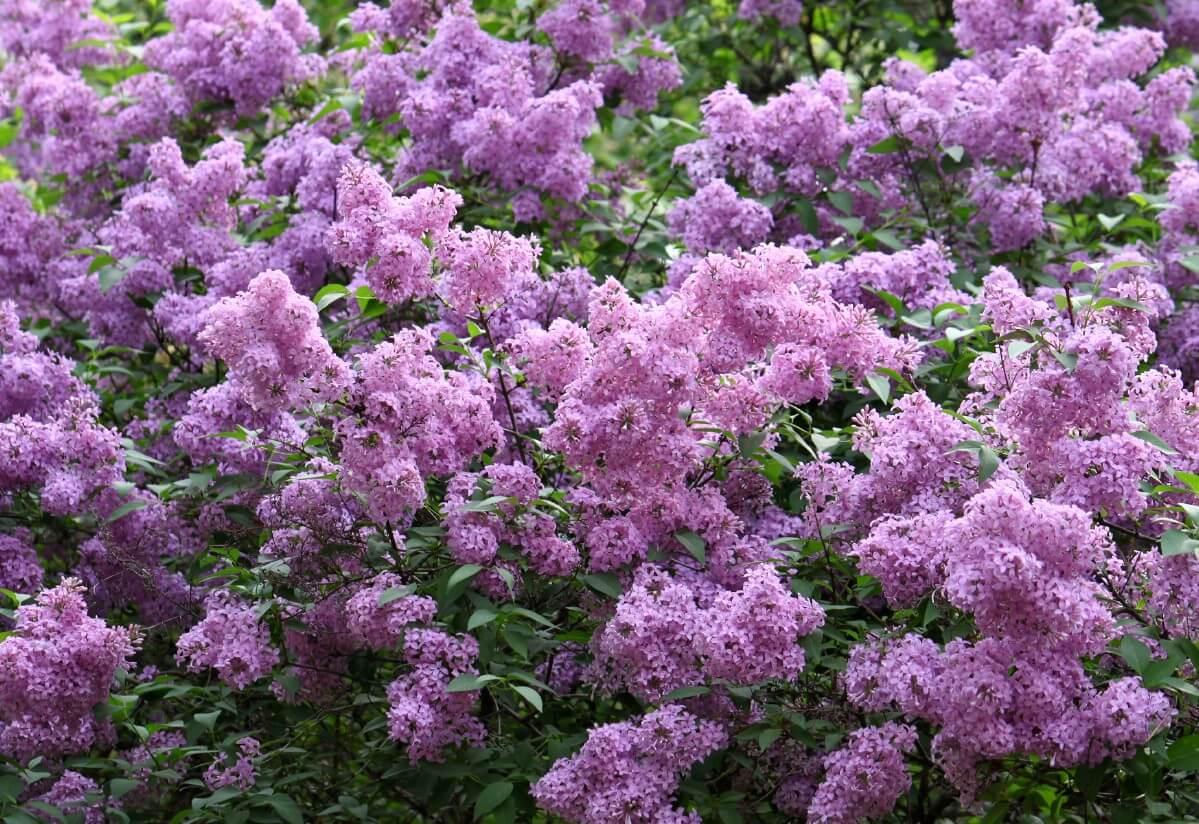
- Scientific name: Syringa vulgaris
- Expected height: 8-15 feet
- Expected width: 6-12 feet
- Rate of growth: Moderate
- Sun requirement: Partial to full
- Ideal growing zones: 3-7
Here is an excellent choice for a flowering privacy shrub that grows well throughout most of the US, with the exception of the southern states, the west coast, and the northernmost parts of the Midwest. It can tolerate temperatures as low as - 30℉.
While the growth rate is characterized as “moderate,” it is on the fast side. The plants not only grow to be tall, but also wide, so they work well if you need to cover a lot of ground.
Speaking of the ground, soil conditions can vary pretty dramatically and lilacs can do all right. Pests tend not to bother them either.
Of course, the most exciting thing about the Common Purple Lilac is its springtime blooms. The purple flowers are beautiful to look at and arguably even more beautiful to smell.
4. Lemon Lights Azalea Shrub
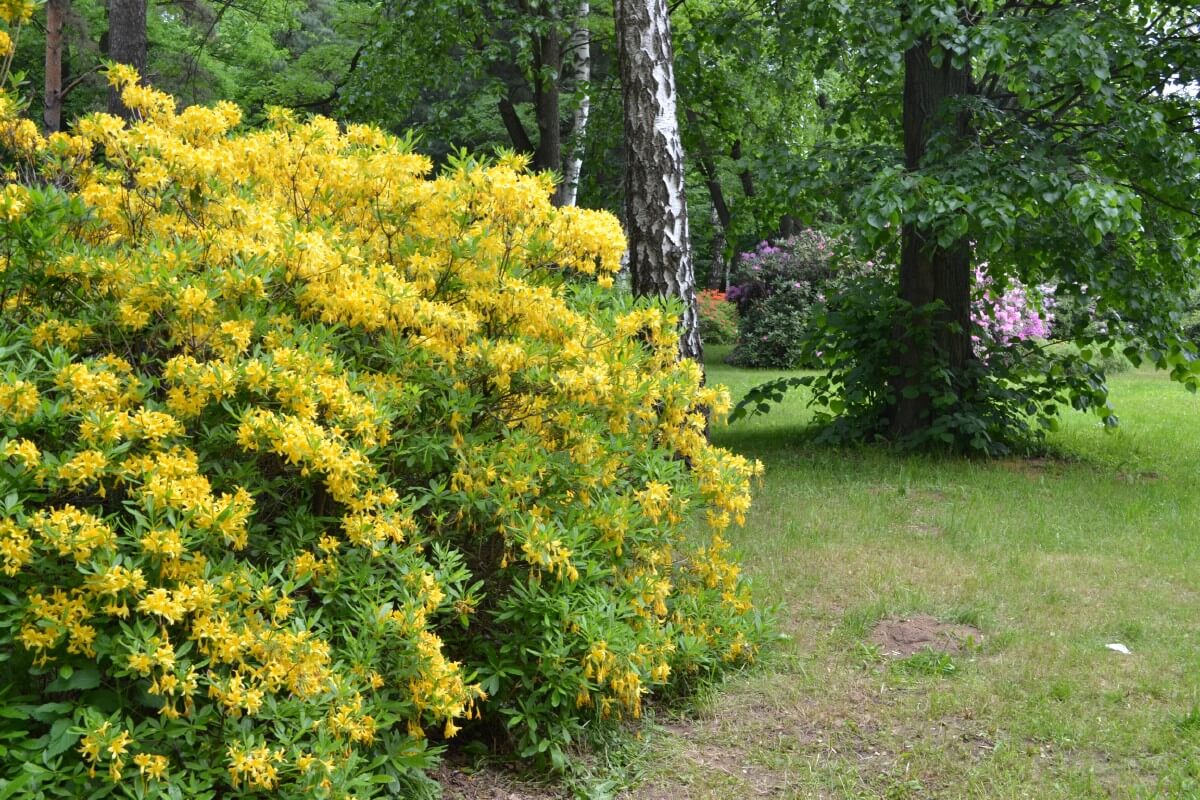
- Scientific name: Rhododendron 'Lemon Lights'
- Expected height: 4-6 feet
- Expected width: 3-4 feet
- Rate of growth: Moderate
- Sun requirement: Partial to full
- Ideal growing zones: 4-7
We wanted to include at least one azalea option in our list of fast-growing privacy shrubs. The most ideal we found in terms of size and growth rate is the Lemon Lights Azalea Shrub.
The growth rate for this azalea is “moderate,” whereas it is characterized as “slow” for some other varieties. Growing as tall as 6 feet and as wide as 4 feet, it is more voluminous than a lot of other azalea shrubs as well.
This plant can thrive even if temperatures drop down as low as -20 degrees Fahrenheit. During springtime, it produces numerous blossoms that are a bright, sunny yellow color.
5. Oakleaf Hydrangea Shrub
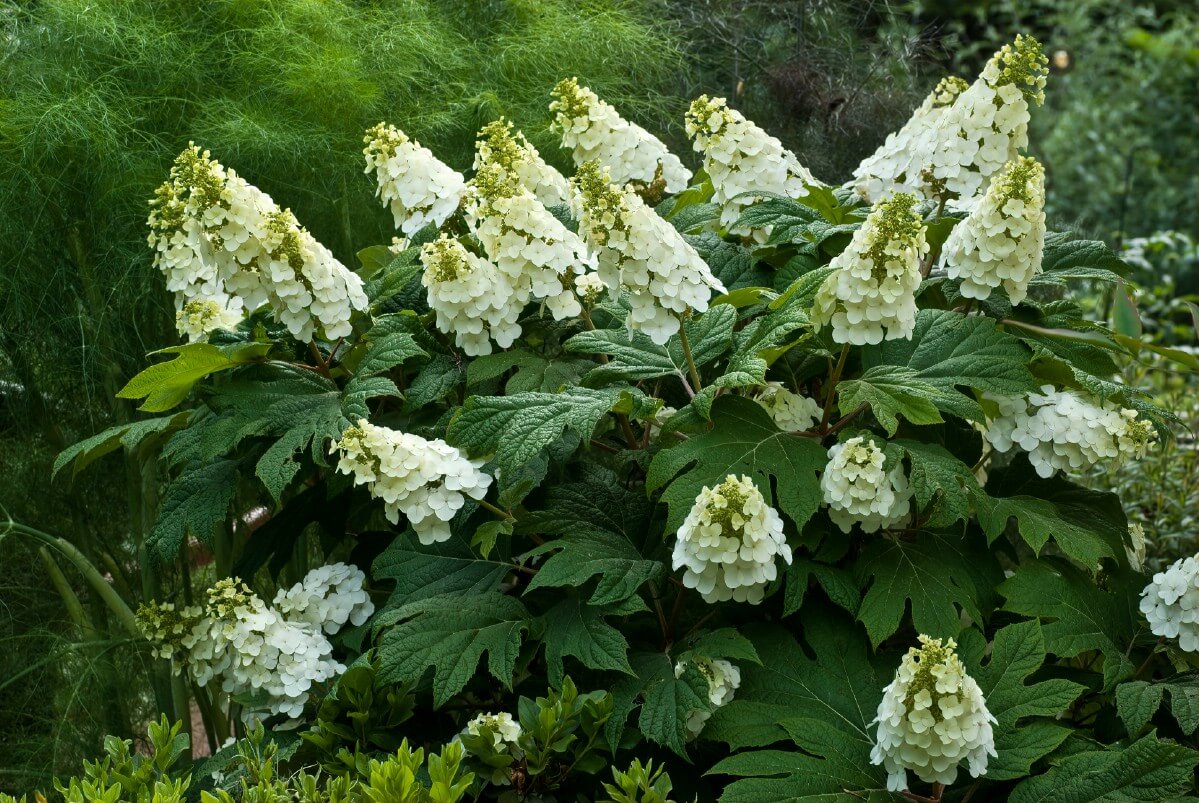
- Scientific name: Hydrangea quercifolia
- Expected height: 6-8 feet
- Expected width: 6 feet
- Rate of growth: Moderate
- Sun requirement: Partial to full
- Ideal growing zones: 4-9
The Oakleaf Hydrangea Shrub is a versatile plant that grows well throughout almost the entire US. It grows relatively quickly and doesn’t require overly meticulous care, making it a suitable option for a beginner (or anyone who just doesn’t feel like they possess a green thumb).
Not only is this a shrub that spreads out nicely, filling out a lot of space horizontally and vertically, but it also features stunning leaves that look similar to those you would find on an oak tree. These large leaves turn many colors in the fall, making for a gorgeous display. The plant also produces white flowers. So, at any time of year, it both increases your privacy and adds a lot of charm to your yard.
6. Gulf Stream Heavenly Bamboo

- Scientific name: Nandina domestica 'Gulf Stream'
- Expected height: 3-3.5 feet
- Expected width: 3 feet
- Rate of growth: Moderate
- Sun requirement: Partial to full
- Ideal growing zones: 6-10
This plant does well through most of the southern United States as well as the western states. While it is not the largest shrub on this list, it stands out both because of its density and its distinctive foliage. The leaves turn red in both the spring and the fall, and during the winter, they feature orange hues as well. During the summertime, they turn a bluish-green. So, you will never get bored of this shrub. It also produces white flowers.
7. Lavender Rhododendron Shrub

- Scientific name: Rhododendron catawbiense
- Expected height: 6-10 feet
- Expected width: 5 feet
- Rate of growth: Moderate
- Sun requirement: Partial to full
- Ideal growing zones: 4-8
One of our favorite recommendations for a privacy shrub is the Lavender Rhododendron Shrub. As a moderate-growing plant, it doesn’t take too long to provide you with some nice cover, especially if you purchase a plant that already has a good start.
There are a few reasons we like this shrub. For one, it grows well almost anywhere in the US. For another thing, it is flat-out gorgeous when it blooms with a dense concentration f purple flowers. Something else we like about it is just how huge it can get. Measuring a maximum of 5 feet across and up to 10 feet tall, it stretches the definition of a “shrub.” And it will be offering you great privacy long before it reaches its full size.
8. Arctic Willow
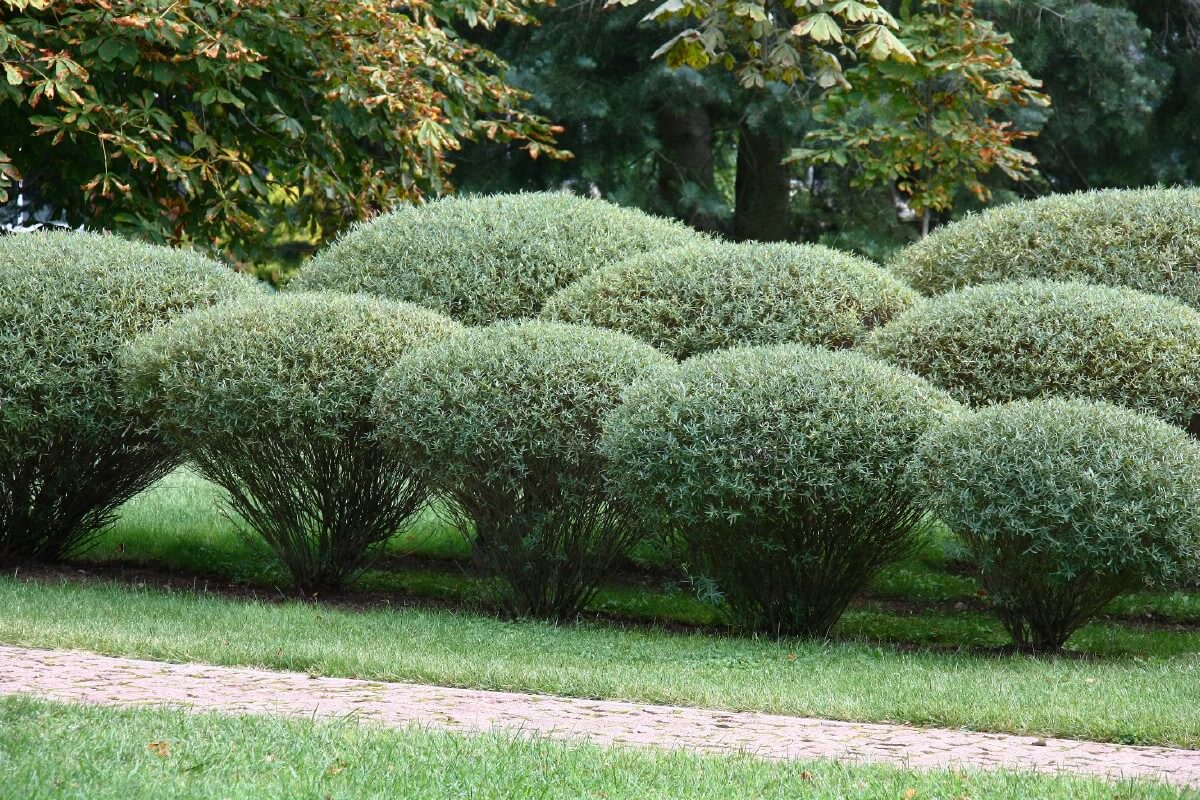
- Scientific name: Salix purpurea
- Expected height: 10-15 feet
- Expected width: 10-15 feet
- Rate of growth: Fast
- Sun requirement: Full
- Ideal growing zones: 3-7
There are several types of willows that may be classified as shrubs—though they exist in a bit of a gray area because they can grow to be quite large.
Among them is the Arctic Willow. This plant can easily reach anywhere from 10-15 feet in height when it is at its full size and can be just as wide. The leaves are silver underneath, and appear to shine when the breeze flutters through them.
You can grow Arctic Willow through most of the US, but it won’t likely work if you are in the south. It also doesn’t do too well in California, nor does it grow well in the northern Midwest.
This flexible, hardy plant can tolerate a wide range of soil types, but it does need full sunlight to flourish.
9. Endless Summer® Hydrangea Shrub
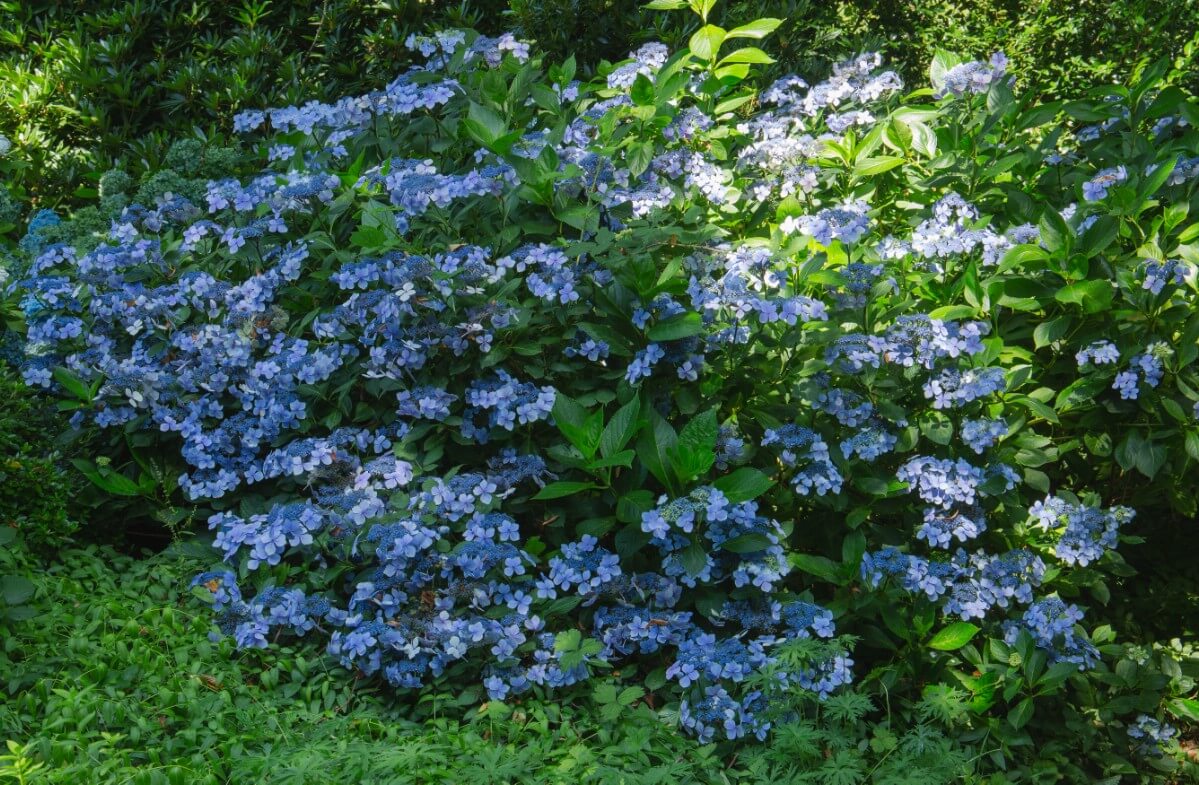
- Scientific name: Hydrangea macrophylla 'Balimer'
- Expected height: 4-6 feet
- Expected width: 4-6 feet
- Rate of growth: Moderate
- Sun requirement: Partial to full
- Ideal growing zones: 4-9
If you enjoy hydrangeas, the Endless Summer® Hydrangea Shrub is worth considering. With a moderate rate of growth, this dense shrub produces large, beautiful flowers in shades of pink, blue and violet.
What makes this plant really exciting is how long the flowers last. While many other plants may only flower for a couple of weeks, the Endless Summer® Hydrangea Shrub retains its blossoms throughout the entire summer season. Not only that, but they continue to bloom through part of the fall. That is why this particular hydrangea plant is called “Endless Summer.”
10. Camellia 'Shi-Shi Gashira' Shrub
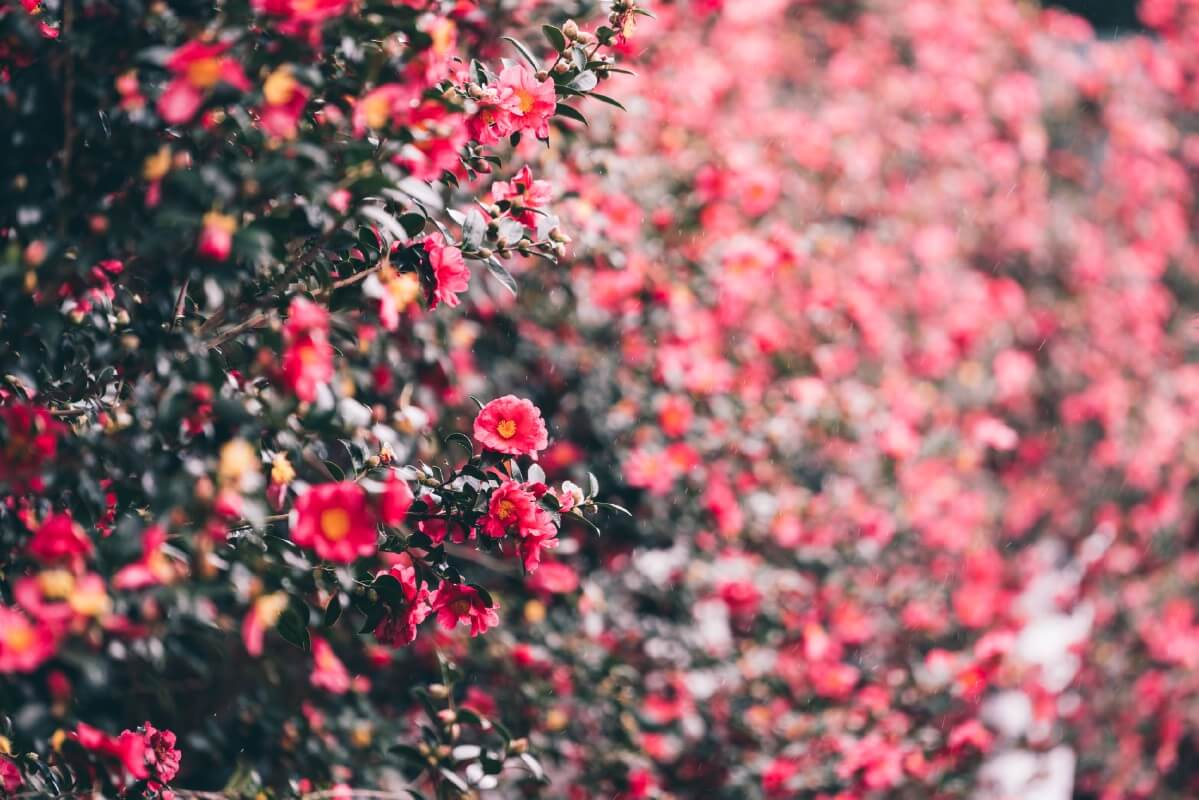
- Scientific name: Camellia sansanqua 'Shi-Shi Gashira'
- Expected height: 5 feet
- Expected width: 5-6 feet
- Rate of growth: Moderate
- Sun requirement: Partial to full
- Ideal growing zones: 7-9
If you live on the west coast or in the south, you might be in one of the growing zones that can support the beautiful Camellia 'Shi-Shi Gashira' Shrub. Indeed, as a drought-resistant plant, this shrub should do well even if you go a long time without rain.
With its moderate growth rate, it can beautify your landscape pretty quickly if you purchase a plant with a good start.
The Camellia 'Shi-Shi Gashira' Shrub produces pink flowers with yellow centers and can make for a striking addition to your yard.
11. Tri-Color Dappled Willow

- Scientific name: Salix integra 'Hakuro-nishiki'
- Expected height: 8-10 feet
- Expected width: 8-10 feet
- Rate of growth: Fast
- Sun requirement: Partial to full
- Ideal growing zones: 5-9
Although the Tri-Color Dappled Willow does not always grow quite as large as the Arctic Willow, at a maximum height and width of 10 feet, it can provide you with a tremendous amount of privacy.
Additionally, it is one of the fastest-growing shrubs on our list. Give it just a few years, and you will be amazed at how big it has gotten.
Where does it thrive? You’ll discover it can flourish through most of the United States, but if you are in a northern state, it may not be suitable. Check your growing zone. Unlike the other willow shrubs on this list, this one does not always require full sun.
As the name suggests, the Tri-Color Dappled Willow features multiple hues: green, white, and pink. There is a unique dappled appearance to the leaves.
12. White Pussy Willow
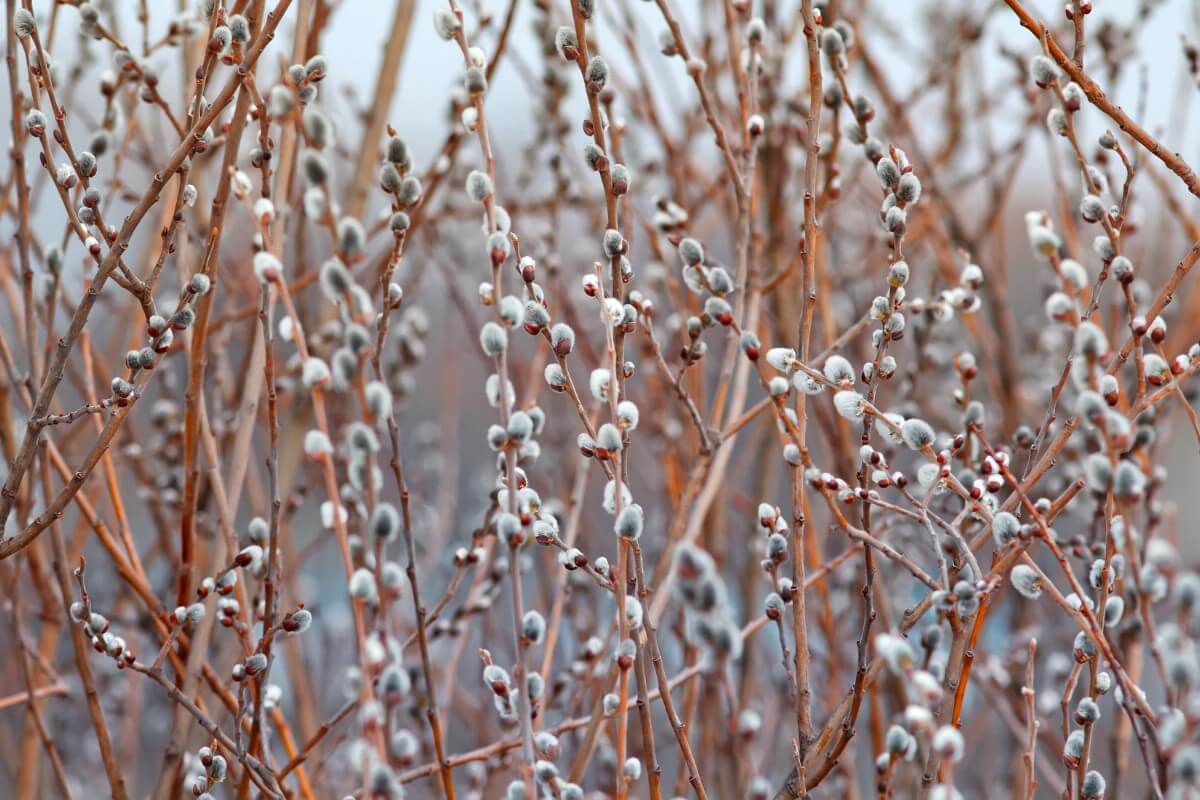
- Scientific name: Salix Caprea
- Expected height: 15-25 feet
- Expected width: 15-25 feet
- Rate of growth: Fast
- Sun requirement: Full
- Ideal growing zones: 3-7
Here is a shrub that gets very tall and wide, to the point where it is definitely in a gray area in terms of classification. It can sometimes be as large as 25 feet x 25 feet!
This shrub doesn’t grow that well in the south or on the west coast, nor in the very northern Midwest. But it should do well in most other parts of the US.
You can expect this plant to add around 2 feet a year until it reaches its full height. It is hardy, tolerating a range of soil types, and is unlikely to have problems with pests.
In terms of aesthetics, this huge shrub produces “catkins.” This is a type of flower that is small and fuzzy. They are whitish, contrasting elegantly with the reddish branches.
Top Fastest Growing Trees for Privacy
Now that you are familiar with some of the best fast-growing shrubs for privacy, let’s take a look at some of the best fast-growing trees for privacy.
You will notice that many of these plants grow significantly faster than the shrubs in the previous section.
13. Austree Willow Hybrid Tree
- Scientific name: Salix x matsudana x alba
- Expected height: 35-75 feet
- Expected width: 5-10 feet
- Rate of growth: Fast
- Sun requirement: Partial to full
- Ideal growing zones: 4-9
The Austree Willow Hybrid Tree is a cross between Salix, matsudana, and alba. You can grow this type of tree almost anywhere in the United States.
Few privacy trees grow as rapidly as this one, adding about 6 feet every single year. That means that it only takes one season before you have an impressive privacy screening.
Thriving in partial to full sunlight and in a variety of soil types, it is a good option pretty much regardless of your exact conditions.
It is very dense, making it an excellent windbreak. If you grow just one of these trees, it can reach up to 75 feet in height. If you decide to plant a row of them instead, they tend to max out at around 45 feet tall.
14. Nellie Stevens Holly
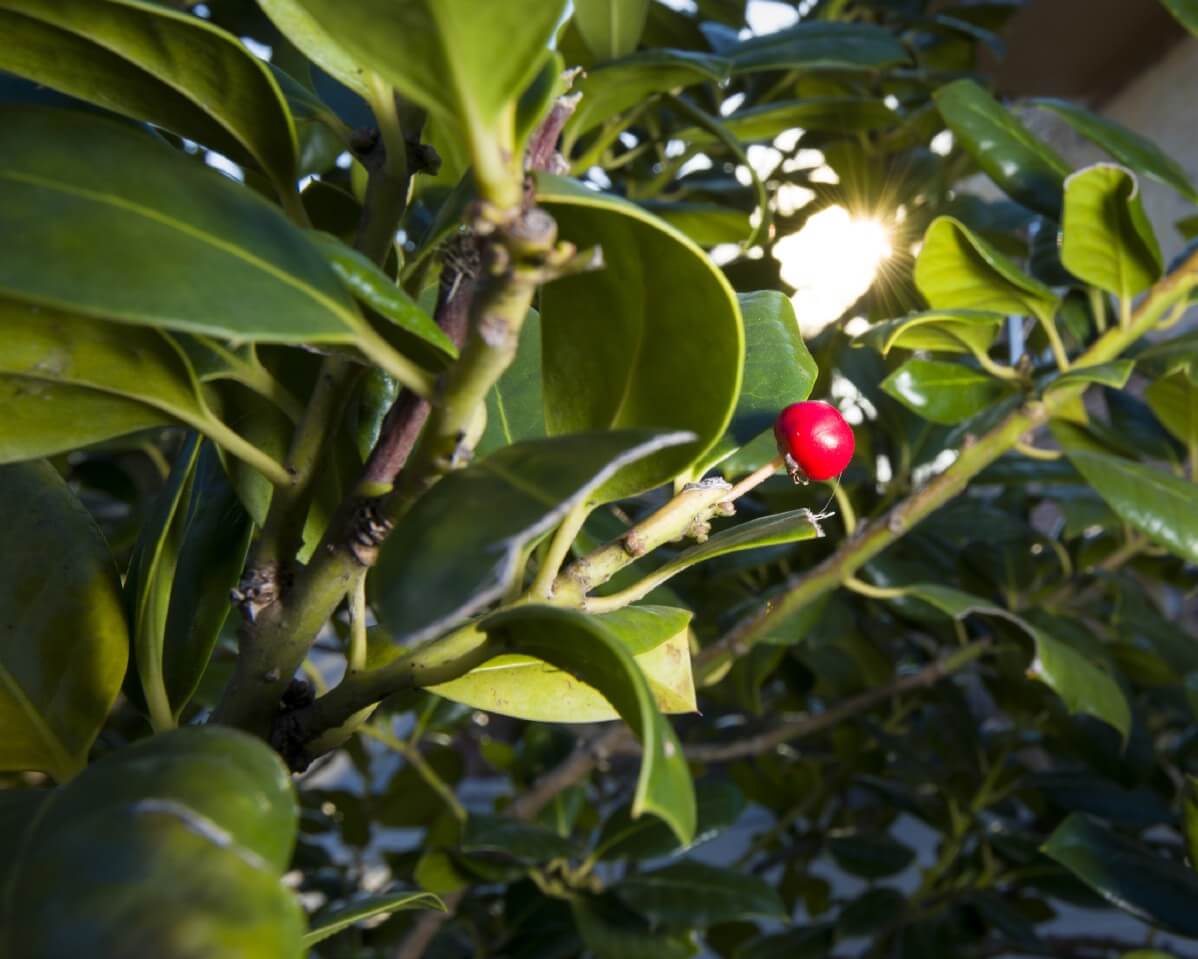
- Scientific name: Ilex 'Nellie R. Stevens'
- Expected height: 15-25 feet
- Expected width: 5-10 feet
- Rate of growth: Fast
- Sun requirement: Partial to full
- Ideal growing zones: 6-9
This privacy shrub does well in the southern and western states. But it does not grow as well in the Midwest or in the Rockies.
The Nellie Stevens Holly can grow as wide across as 10 feet and as high as 25 feet. If you plant them sufficiently close together (spaced out at around 5-6 feet), you will get a high, dense hedge.
While the trees form cone shapes, when you have them close together, you can trim the tops to make them flat, getting a box shape.
Worried about planting a hedge that will turn brown if it gets too dry? That won’t be an issue with the Nellie Stevens Holly.
Also, you will be thrilled by how rapidly these trees grow, increasing in height by as much as 2-3 feet annually.
15. Leyland Cypress Tree
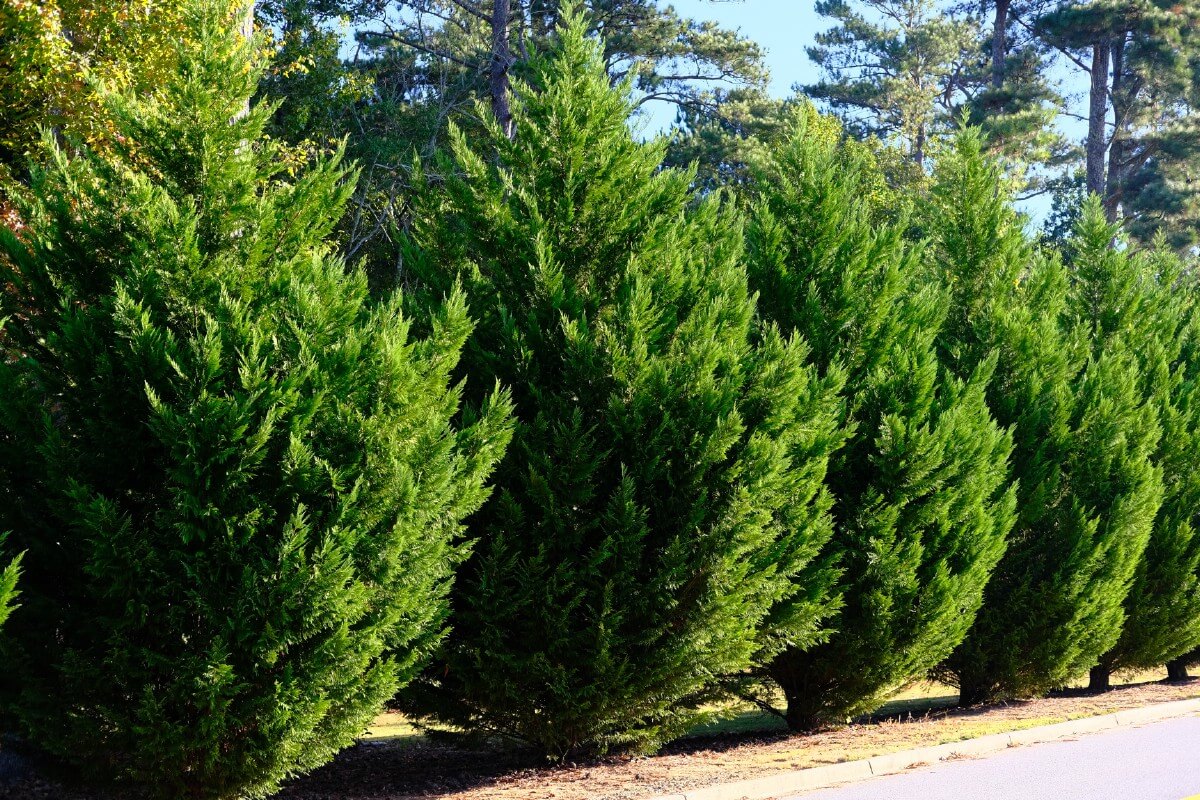
- Scientific name: Cupressus
- Expected height: 40-60 feet
- Expected width: 20-25 feet
- Rate of growth: Fast
- Sun requirement: Full
- Ideal growing zones: 6-10
Growing well throughout the southern and western United States, this is one of the most popular privacy trees around. It can add 3-5 feet per season, so you’ll have a tall screen in no time.
Pretty much regardless of your soil type, these trees will flourish. But they do need full sun. If you plant them close together, they will form an amazing privacy screen and windbreak.
16. Sunset Glow Bamboo
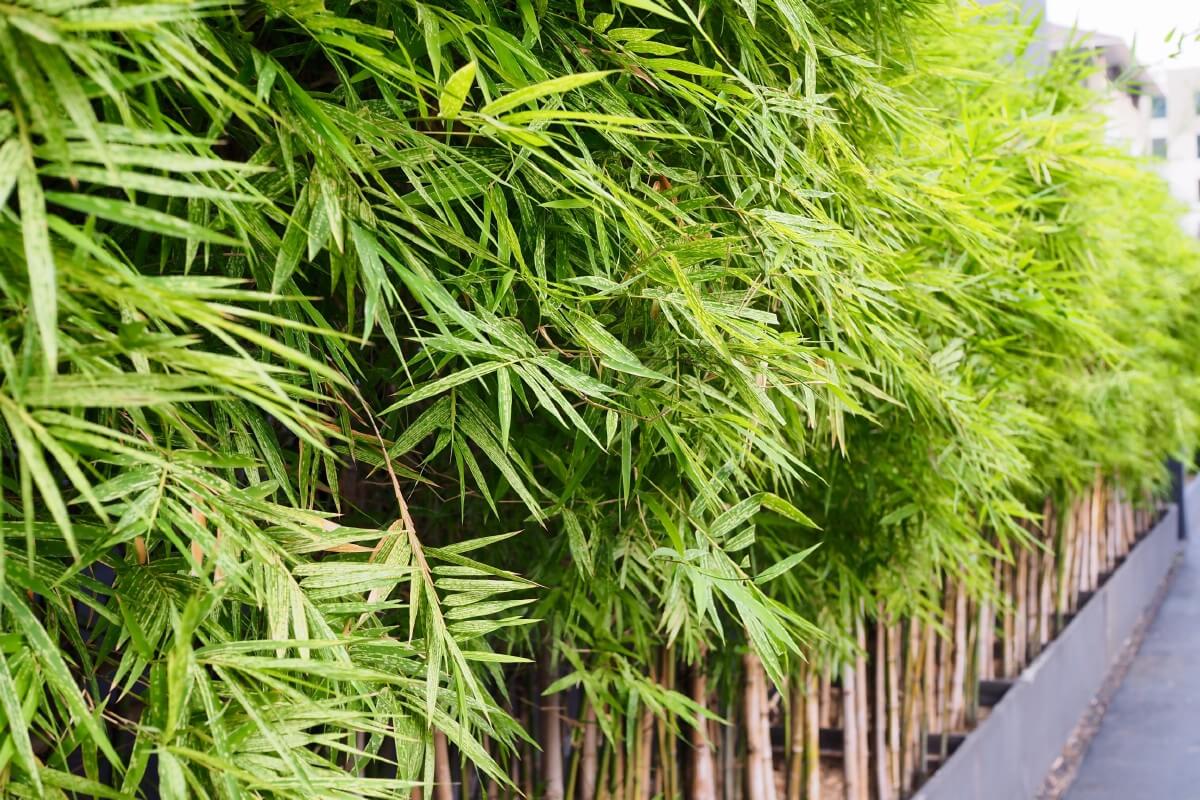
- Scientific name: Fargesia rufa
- Expected height: 6-8 feet
- Expected width: 5-6 feet
- Rate of growth: Fast
- Sun requirement: Partial to full
- Ideal growing zones: 5-9
Technically, bamboo is grass, not a tree, but we will put it in this section because this is where some people will expect to find it.
Sunset Glow Bamboo can grow throughout most of the US, with the exception being the northern Midwest and Western states (though it does okay in Washington and Oregon). It also doesn’t thrive in the northernmost parts of New England.
You may not find this plant to be an ideal privacy screen if you get a lot of wind. But it is flexible with respect to sunlight and soil type.
Even though Sunset Glow Bamboo is a rapidly growing plant, it is not invasive. In fact, you can keep it fairly contained if you need to, so if you are in search of a privacy hedge for a small yard, this might be a good option. You can even prune it into a nice box shape!
As to the name “Sunset Glow,” it refers to the color of the stems, which are reddish. They stand out spectacularly against the green leaves.
17. Edible Bamboo Plant
- Scientific name: Dendrocalamus strictus
- Expected height: 10-15 feet
- Expected width: 5-10 feet
- Rate of growth: Fast
- Sun requirement: Partial to full
- Ideal growing zones: 8-11 (or as low as 4 if you are growing it on your patio)
If you are looking for another bamboo option that can grow to reach an even greater height than the Sunset Glow Bamboo, an Edible Bamboo Plant might be just what you need.
Growing up to 15 feet in height, this plant can thrive in heat, cold, sun, or partial shade. It is low-maintenance, non-invasive, and easy to contain. Once again, you should avoid exposure to heavy winds.
As the name suggests, this type of bamboo can produce edible shoots. Feel free to use them in your cuisine.
18. Thuja Green Giant
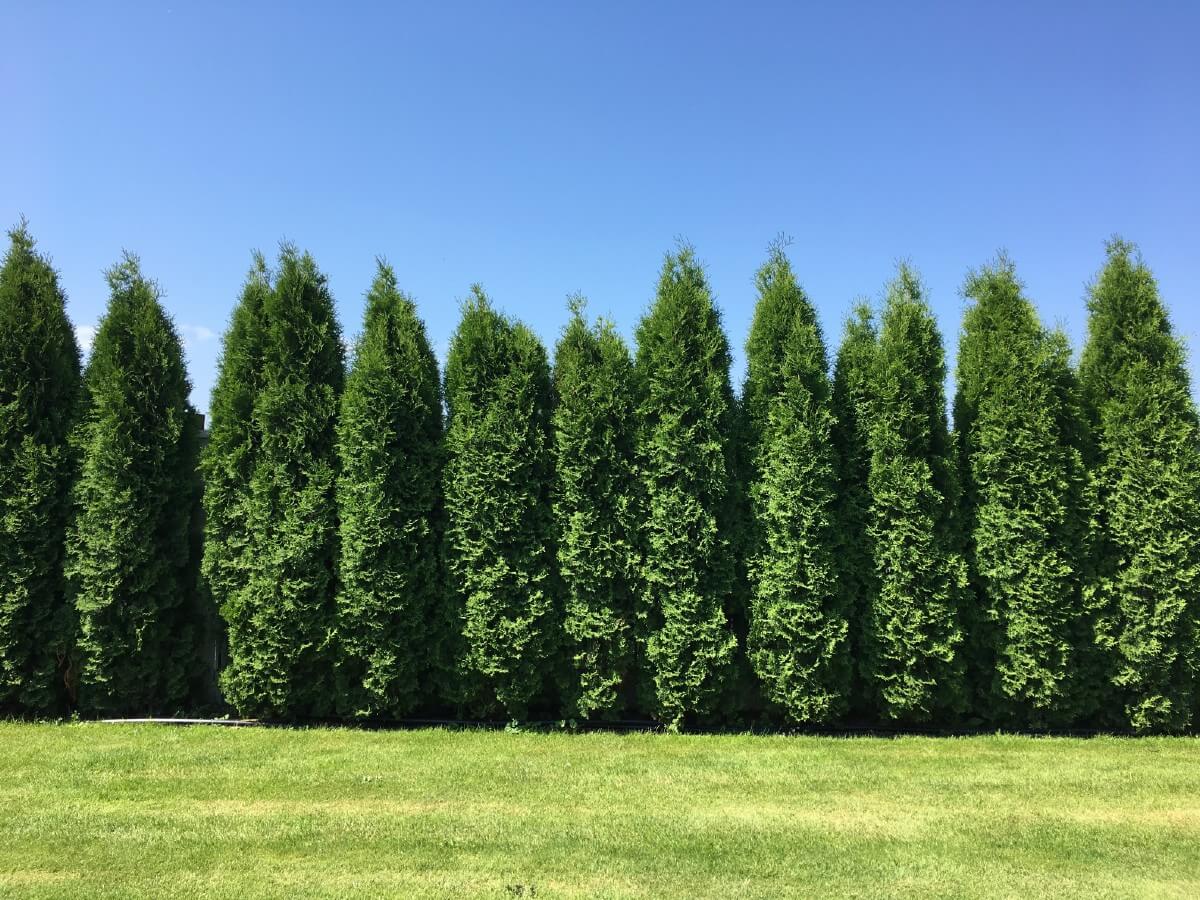
- Scientific name: Thuja standishii x plicata
- Expected height: 30-40 feet
- Expected width: 12-15 feet
- Rate of growth: Fast
- Sun requirement: Partial to full
- Ideal growing zones: 5-9
With a name like Thuja Green Giant, you know this is a plant that can grow to be massive. In fact, it can reach as high as 40 feet while measuring up to 15 feet across. It grows throughout most of the United States, just not in some Northern locations.
If you want, you can plant these trees 5-6 feet apart, and they will grow together into a hedge without gaps. Planting them close to each other like this will not decrease their height. You can expect around 3-5 feet of new growth annually until they reach their maximum height.
There are a number of other great reasons to think about choosing these fast-growing privacy trees. For starters, they are not as susceptible to insects or blight as some other plants. Also, they do well even during dry spells while also tolerating snow and ice. Finally, maintaining their appearance is virtually effortless.
19. Full Speed A Hedge® American Pillar Arborvitae
- Scientific name: Thuja occidentalis 'American Pillar'
- Expected height: 25-30 feet
- Expected width: 4 feet
- Rate of growth: Fast
- Sun requirement: Full
- Ideal growing zones: 3-8
If you have full sunlight, one plant you can consider for a fast-growing privacy screen is the Full Speed A Hedge® American Pillar Arborvitae. It does well in most locations in the US.
Adding 3 feet annually, this plant does not take too long to reach a significant height. At its maximum, it can grow as tall as 30 feet.
You will notice that the tree is just 4 feet wide. That does mean if you want to cover a wide span, you will need to get quite a few of them.
But once you plant them and they have some time to grow, the results can be rewarding in the form of a dense, high hedge.
Plus, if you don’t actually have a lot of room in your yard, being able to plant just one or two of these may be quite convenient. You might not have space for a wider tree.
It is a hardy plant that can tolerate major swings in temperature as well as wind and precipitation. Soil conditions can vary, but you do need to make sure it is getting ample full sunlight.
20. Lombardy Poplar Tree
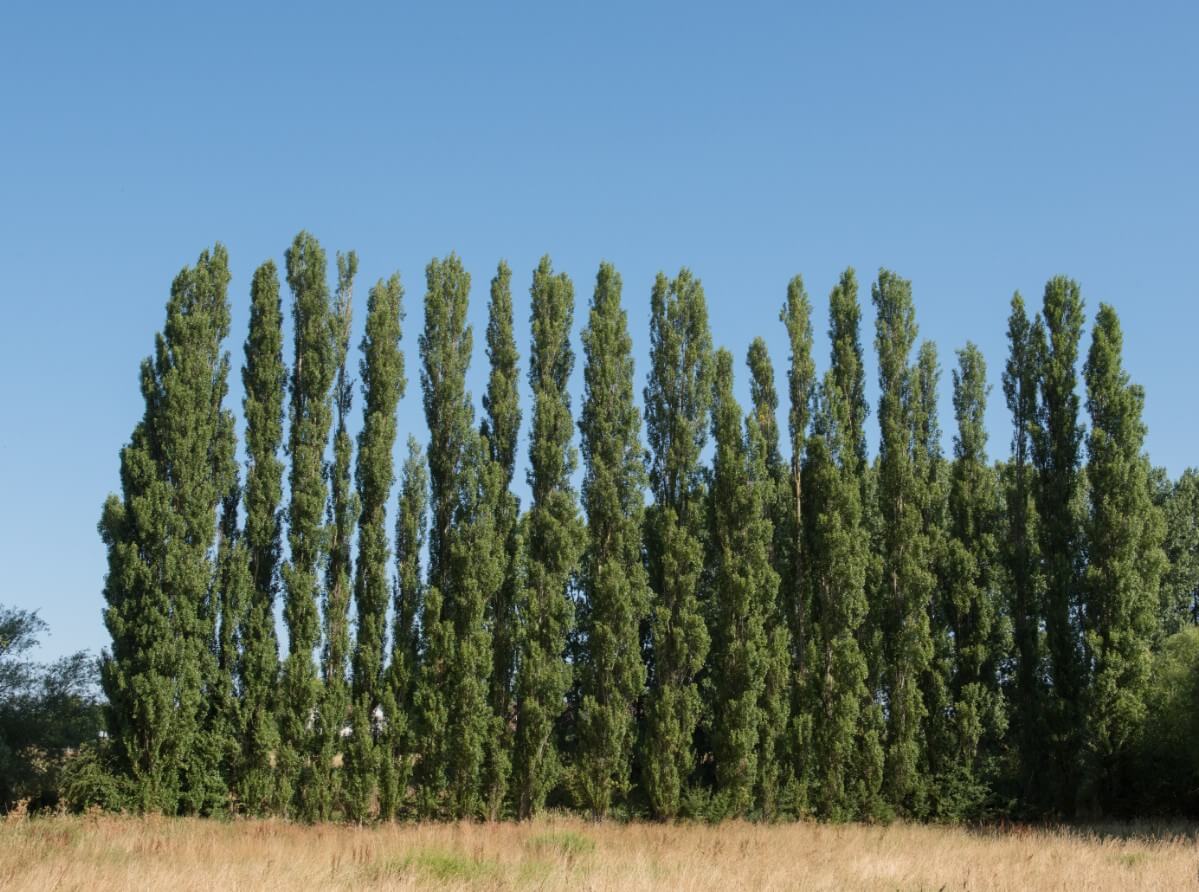
- Scientific name: Populos nigra
- Expected height: 40-60 feet
- Expected width: 10-15 feet
- Rate of growth: Fast
- Sun requirement: Full
- Ideal growing zones: 3-9
The Lombardy Poplar Tree is a beautiful plant that you can grow almost anywhere in the US. It puts on height incredibly fast, rising around 6 feet every year until reaching its maximum height of 40-60 feet. If you plant it by itself, it also can get to be quite wide, measuring up to 15 feet.
If you prefer, you can plant a row of these poplars, spacing them out around 5-8 feet apart.
You need to give these trees full sunlight, although if it is really hot when you start them out (or really dry), shade is preferred. Regular watering is also required when they are young. In the long run, however, once these trees are established, you will find that they can withstand drought conditions quite well and that they can handle a lot of hot, bright sunlight.
These trees are immediately evocative of a Mediterranean atmosphere and will give your property a sophisticated, elegant appearance.
21. Eastern White Pine Tree
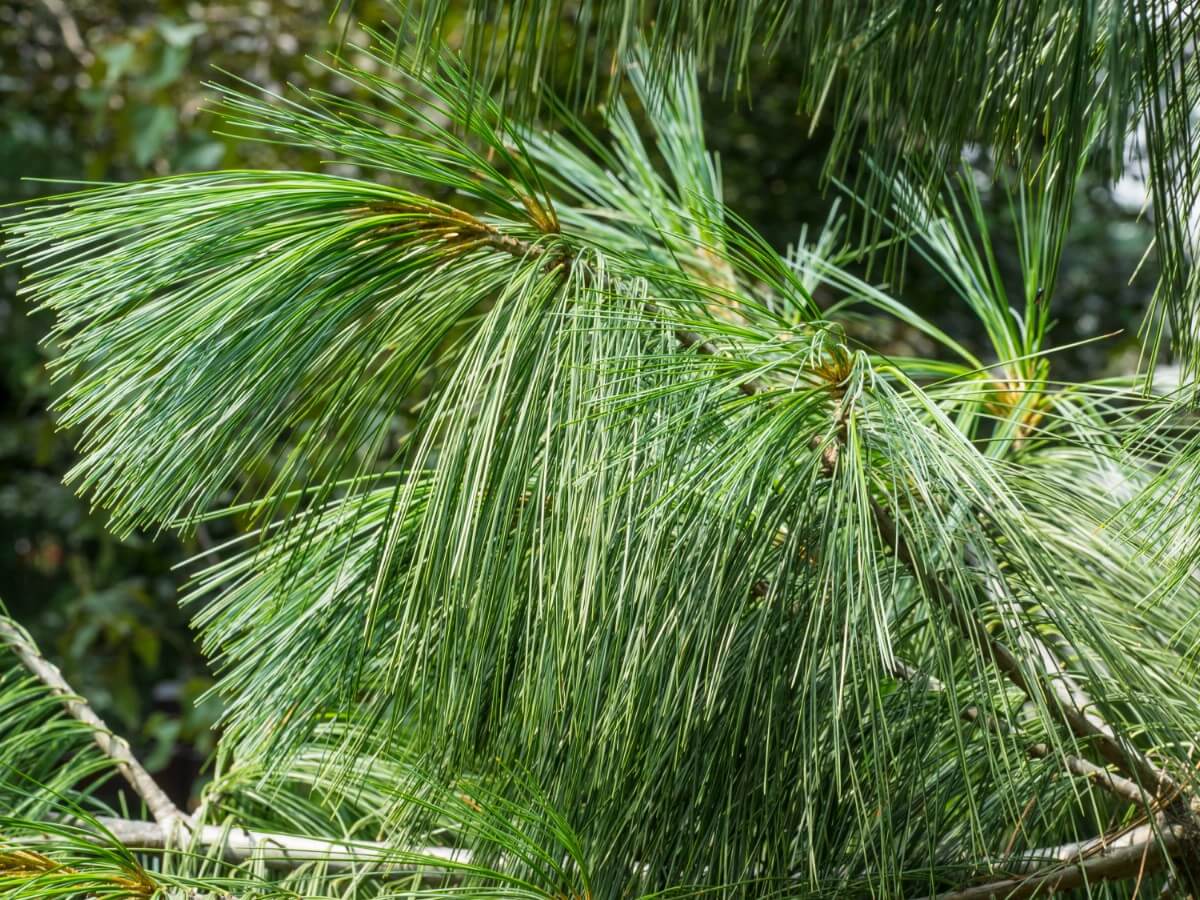
- Scientific name: Pinus strobus
- Expected height: 50-80 feet
- Expected width: 20-40 feet
- Rate of growth: Fast
- Sun requirement: Partial to full
- Ideal growing zones: 3-8
This pine can live almost anywhere in the country, except in the far south and north, and the southwest coast.
These pines can get to be very tall, reaching up to 80 feet, and may be as much as 40 feet across. So just one of these can increase your privacy substantially.
One reason to consider this type of tree is wildlife. If you have animals in your areas like squirrels or hares, you will find that they are attracted to this tree.
Another reason to think about choosing the Eastern White Pine is that it lives for hundreds of years. So, if you own a property you will be passing down to your heirs, you can be assured they can continue to enjoy this beautiful tree, and that eventually their children may as well.
22. Moonglow Juniper
- Scientific name: Juniperus scopulorum 'Moonglow'
- Expected height: 10-15 feet
- Expected width: 4-6 feet
- Rate of growth: Moderate
- Sun requirement: Full
- Ideal growing zones: 3-7
If you want a beautiful bluish-green tree to enhance your yard, the Moonglow Juniper is worth thinking about. This moderately fast-growing tree can reach up to 15 feet in height. At just 4-6 feet wide, it is one of the narrower options on this list, so it is ideal if you have a small yard.
A wide variety of soil types are acceptable for Moonglow Juniper, but you will need to get the plant plenty of full sun.
23. Robin™ Red Holly Tree
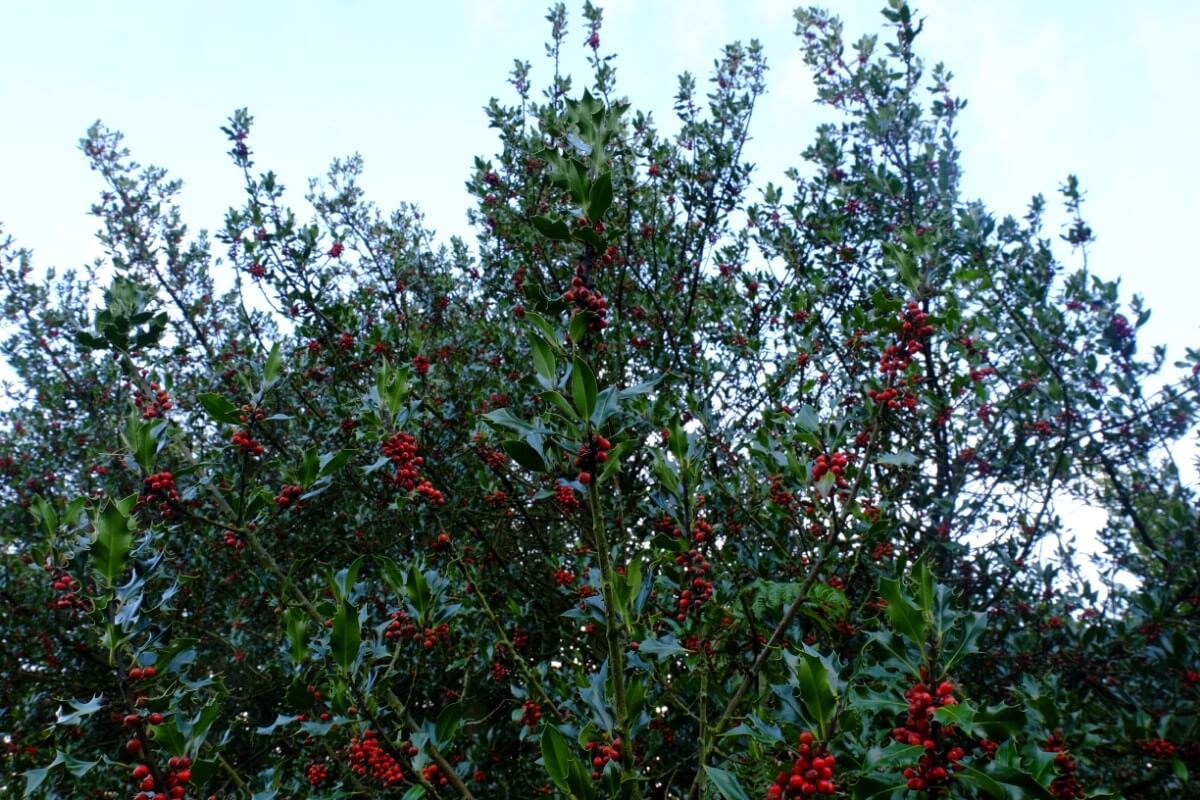
- Scientific name: Ilex hybrid 'Conin'
- Expected height: 10-12 feet
- Expected width: 6-8 feet
- Rate of growth: Fast
- Sun requirement: Partial to full
- Ideal growing zones: 6-9
If you want to add a splash of color to your yard while also increasing your privacy, one way to do it is to plant a Robin™ Red Holly Tree.
This tree thrives best in the southern and western US. It can grow up to 12 feet tall and up to 8 feet wide.
Your soil will need good drainage, but it can range in type. The plant is easy to maintain and is a favorite among birds, who like the berries.
24. Canadian Hemlock
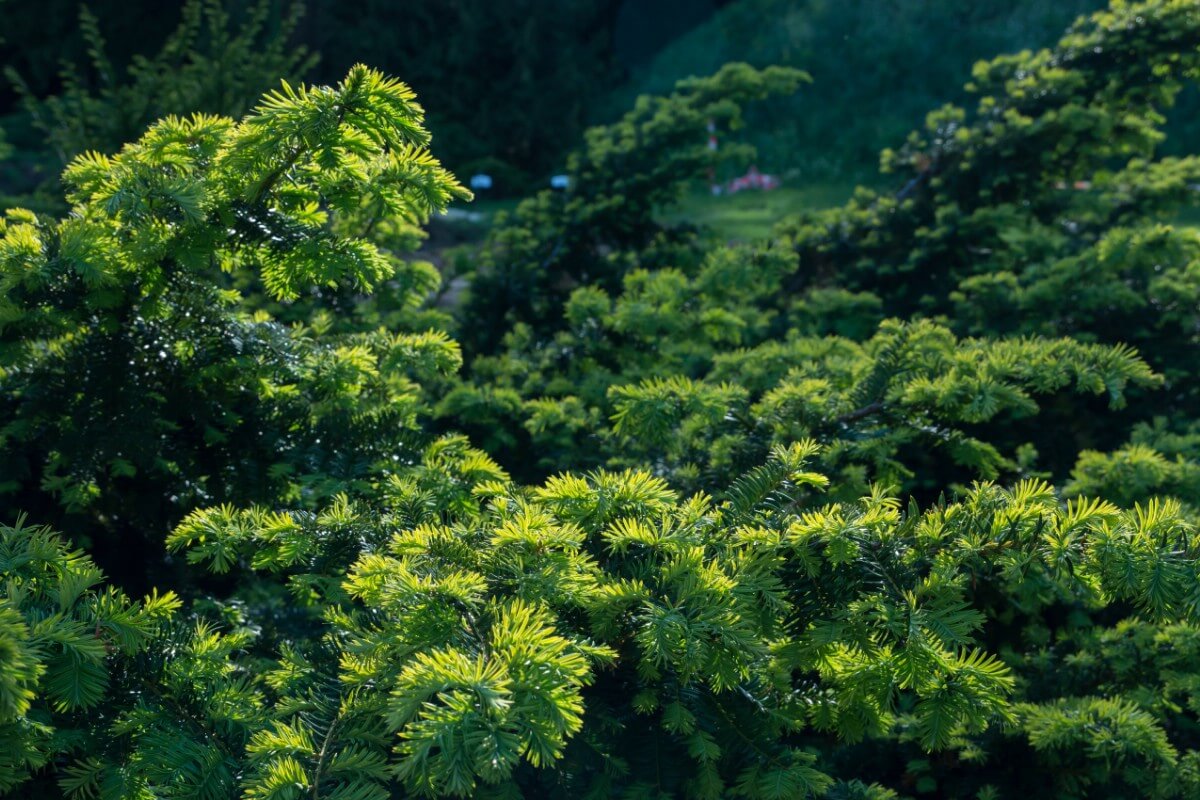
- Scientific name: Tsuga canadensis
- Expected height: 35-45 feet
- Expected width: 20-25 feet
- Rate of growth: Fast
- Sun requirement: Partial to full
- Ideal growing zones: 3-7
If you want an evergreen with a different look, consider the Canadian Hemlock. You can grow this plant in most locations in the US, save for the south and the west coast.
At its full height, this evergreen will reach up to 45 feet. It will also be up to 25 feet wide.
So, planting even just one Canadian Hemlock can make a major difference in improving the privacy level of your yard. But you can also plant them in a row for even more seclusion.
The branches of this tree have a graceful, cascading look. They also grow very densely, making for a good windbreak.
25. Dawn Redwood Tree
- Scientific name: Metasequoia glyptostroboides
- Expected height: 40-50 feet
- Expected width: 20-30 feet
- Rate of growth: Fast
- Sun requirement: Full
- Ideal growing zones: 4-8
Outside of just a few areas in the far north and south as well as parts of the southwest coast, you can expect the Dawn Redwood Tree to grow very well.
Although it is important to place this tree in soil that drains well, it is okay if there is some pooling water in your yard.
Once the tree reaches maturity, it will be anywhere from 40 to 50 feet tall and between 20 and 30 feet wide. Thus, it can provide you with an amazing amount of coverage.
26. Vanderwolf's Pyramid Limber Pine
- Scientific name: Pinus flexilis 'Vanderwolf's Pyramid'
- Expected height: 20-30 feet
- Expected width: 10-15 feet
- Rate of growth: Fast
- Sun requirement: Full
- Ideal growing zones: 4-7
Vanderwolf's Pyramid Limber Pine is an immediately recognizable tree that stands out from other evergreens. First of all, the needles twist, and you are not going to see that too often. Secondly, the blue-green color is eye-catching. And thirdly, the pyramid shape of the plant is appealing, so aesthetically, you cannot go wrong.
This plant is happy in most locations in the US, though it may not do as well in the far south or west.
It doesn’t take much effort to maintain this tree, and you will find it can put up with a lot of adversity without suffering. Long dry spells and pests that might cause other plants to struggle may not manage to stand in the way of the Vanderwolf.
Once the tree is mature, it will be anywhere from 20 to 30 feet tall and 10 to 15 feet wide.
27. White Spruce Tree
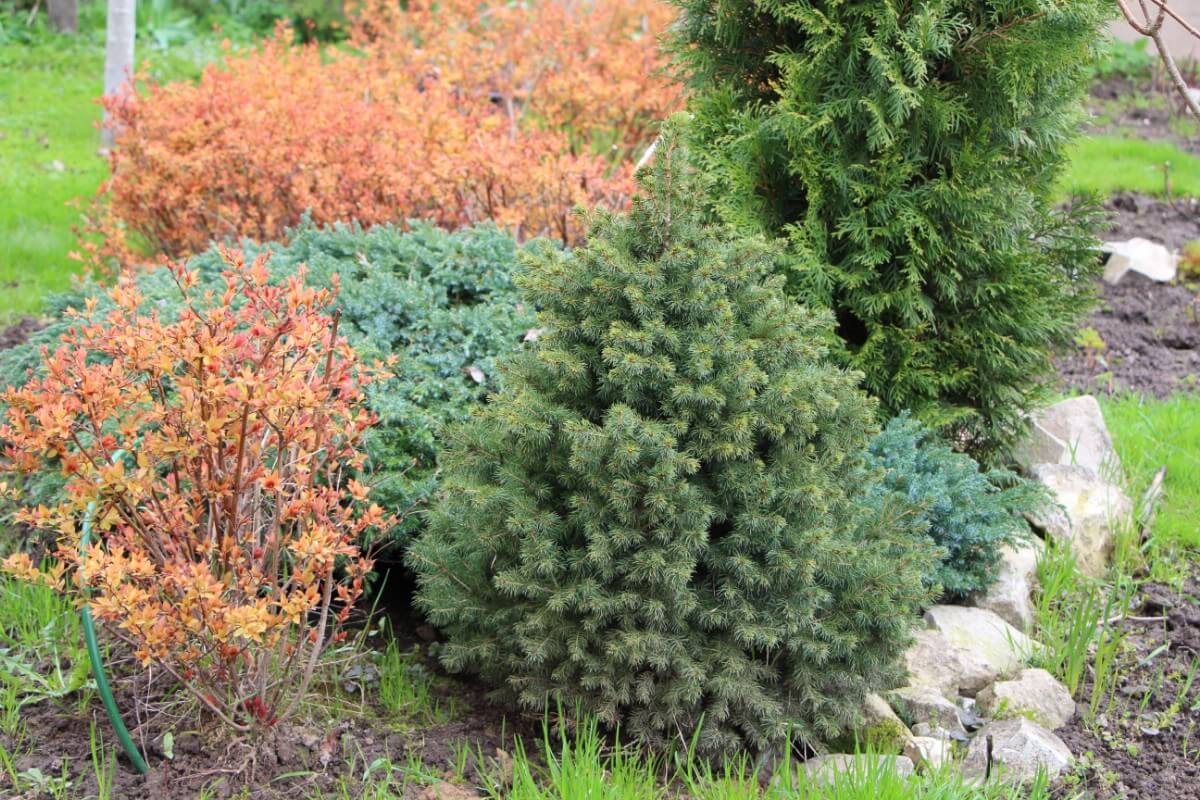
- Scientific name: Picea Glauca
- Expected height: 40-60 feet
- Expected width: 10-20 feet
- Rate of growth: Moderate
- Sun requirement: Full
- Ideal growing zones: 2-6
Here is a plant that doesn’t like the south or the west coast, but can flourish through most of the rest of the US, including in northernmost locations.
A White Spruce Tree grows at a moderate pace and can live in wet or dry soils. It can tolerate much lower temperatures than a lot of other trees, even down to -40 degrees Fahrenheit.
You will love the vibrant green color of the tree, as well as how much privacy it provides you since its width at maturity is 10-20 feet, and it can reach an impressive 40-60 feet in height.
28. Golden Bamboo
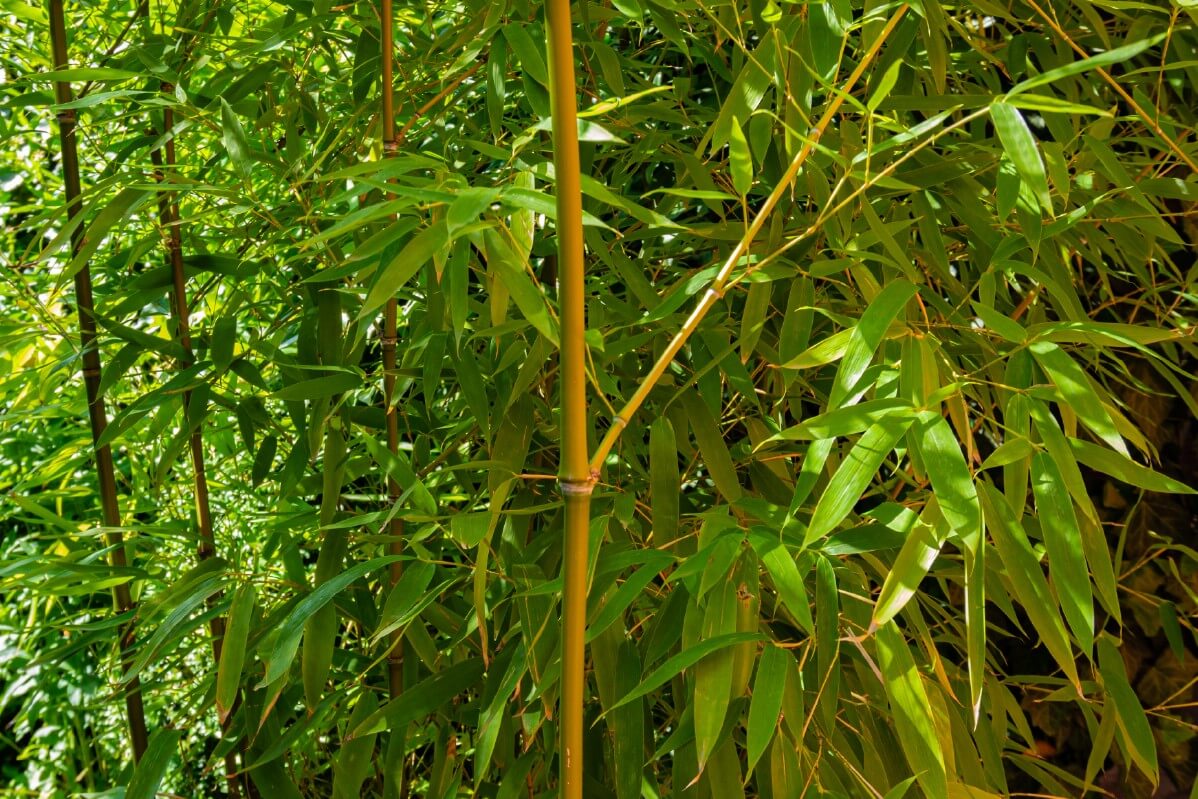
- Scientific name: Phyllostachys aurea
- Expected height: 30 feet
- Expected width: 20 or more feet
- Rate of growth: Fast
- Sun requirement: Partial to full
- Ideal growing zones: 6-10
In search of bamboo that grows rapidly and has a classic look? Golden Bamboo may be suitable for you so long as you do not live in the northern part of the country (unless on the west coast).
The leaves of this plant are green, but the stalks are yellow. It can get to be 20 or more feet wide and 30 feet tall.
As with other types of bamboo, you should avoid planting Golden Bamboo if your yard gets a lot of heavy wind. But as far as soil types are concerned, you can get away with a pretty broad range so long as what you have is moist and drains well. That being said, it does not need a lot of precipitation to flourish.
29. Black Bamboo
- Scientific name: Phyllostachys nigra
- Expected height: 15-25 feet
- Expected width: 5-10 feet
- Rate of growth: Fast
- Sun requirement: Partial to full
- Ideal growing zones: 6-10
Another type of bamboo worth considering for privacy is Black Bamboo. This type of bamboo takes its name from its dark stalks. It is useful to know that they do not start that way; a young Black Bamboo plant will have green shoots. It can take around a year for the stalks to change color.
At a maximum, this plant can grow to be 25 feet tall. By spacing several bamboos a few feet apart, you can get them to grow together to create a wall.
One more reason to consider Black Bamboo is if you live in a cold climate. This particular type of bamboo tolerates temperatures as low as 0 degrees Fahrenheit. So, even if you live in an area where temperatures drop well below freezing, you can raise Black Bamboo.
30. Multiplex Bamboo
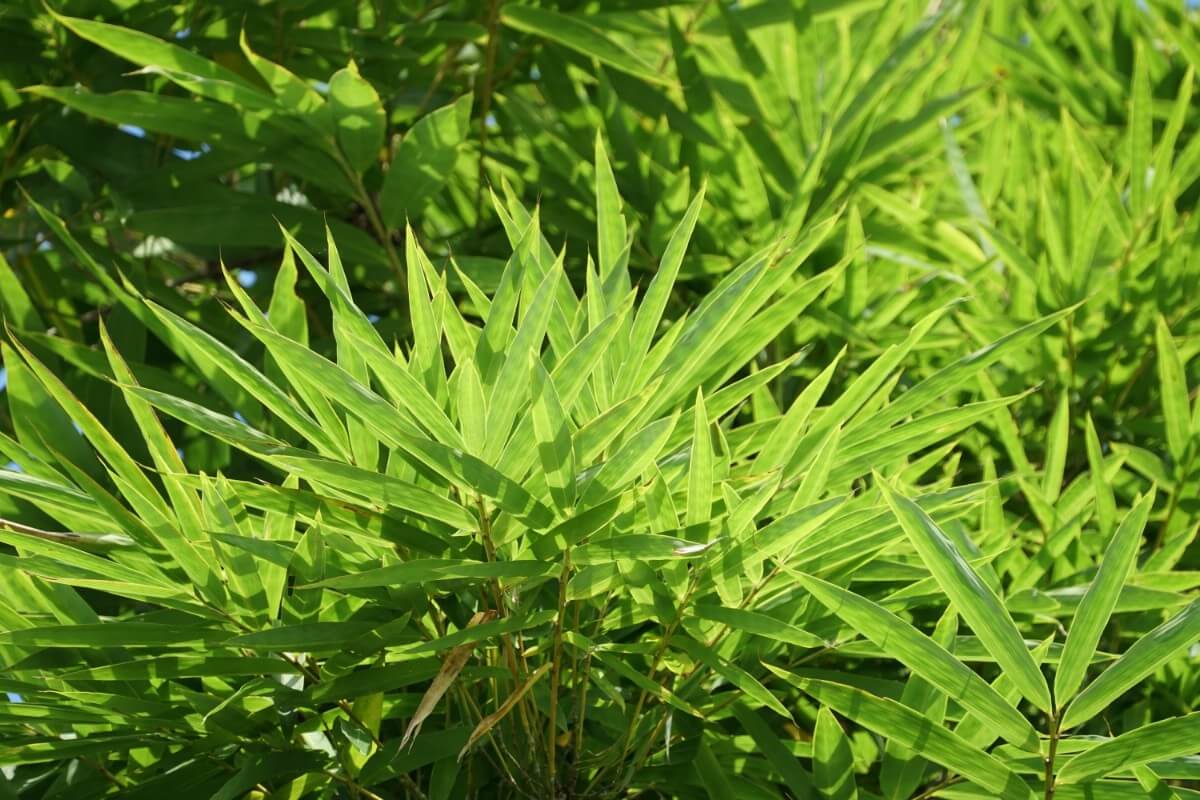
- Scientific name: Bambusa multiplex
- Expected height: 20-30 feet
- Expected width: 4-6 feet
- Rate of growth: Fast
- Sun requirement: Partial to full
- Ideal growing zones: 7-10
This type of bamboo can stand temperatures that drop as low as 10 degrees Fahrenheit, but it grows best in southern states and along the coasts.
Featuring yellow and green hues, this bamboo can reach an impressive 30 feet in height. Plant several in close proximity to each other, and they will join to form a wall that offers excellent privacy.
31. Blue Cloak White Fir Tree
- Scientific name: Abies concolor 'Blue Cloak'
- Expected height: 7-10 feet
- Expected width: 3-4 feet
- Rate of growth: Moderate
- Sun requirement: Full
- Ideal growing zones: 4-8
While not as fast-growing as other trees on our list, this beautiful fir can add 8 inches a year, so it is still a moderately fast grower. It can thrive in zones 4-8, which means you can grow it successfully in most locations throughout the US.
In terms of height, it can reach 7-10 feet, which is reasonably tall. Its width will max out at around 3-4 feet. So, if you have a smaller space where you need privacy, one of these trees may be a good fit. If you have a larger space, you could plant a series of them a few feet away from each other.
Visually, these firs have a couple of standout features. The first is their shape, which is a classic cone that requires little maintenance. The second is their color, a distinctive bluish-green that will stand out from all the other foliage in your yard. That color is, of course, what lends the tree its name, “Blue Cloak White Fir Tree.”
32. Brodie Eastern Red Cedar Tree

- Scientific name: Juniperus virginiana 'Brodie'
- Expected height: 30-40 feet
- Expected width: 8-10 feet
- Rate of growth: Fast
- Sun requirement: Partial to full
- Ideal growing zones: 3-9
Looking for a fast-growing cedar? The Brodie Eastern Red Cedar Tree is a great choice pretty much anywhere in the country since it can grow in zones 3-9. It can tolerate a wide range of climate conditions and soil types, is disease-resistant and pest-resistant, and requires very little maintenance.
Even if your temperatures drop to as much as 30 degrees below, this cedar tree can continue to thrive.
Since these cedars can span 10 feet in width and grow as tall as 45 feet, a single Brodie Eastern Red Cedar Tree can provide you with ample privacy. It is a beautiful tree to look at, and many people enjoy the smell of cedars as well.
What to Consider When Choosing Fast Growing Trees and Shrubs for Privacy
Excited about the many benefits of fast-growing trees and shrubs for privacy? Before you can get started, you need to know what factors are important in choosing what to plant.
Below are some criteria to think about. Taking all of these factors into account will help you select plants that will grow successfully in your location and provide you with the benefits you are looking for.
Rate of growth: Trees and shrubs grow at different rates. Find out how many feet you can expect the plant to grow per year, and how much of that growth will be vertical versus horizontal.
Expected size and shape: Do you want a tree that is tall and thin? Or do you want one that will expand outward to offer lots of shade? Or are you looking for a profile that is somewhere in between?
Growing zone: One of the most important factors in choosing shrubs and trees for privacy is the growing zone for which they are suitable. If you pick a plant that will not thrive in your locale, it will be a struggle to get it to grow, if it grows at all. As trees and shrubs can be expensive to invest in, the last thing you want to do is waste your money.
Soil type: What kind of soil do you have in your yard? Pick a plant that will be able to grow in it. A plant that does well in dense, moist soil will not necessarily flourish if you have dry, loose soil, or vice versa.
Sun requirements: How much sun does the plant need, and how much do you have available in the spot where you want to put it?
Hydration requirements: How much precipitation do you get in your area? If you get a ton of rain every year, a desert plant probably is not going to be happy where you are at. Likewise, a plant that usually grows in rainforest conditions is not going to do well if your home is in the desert.
Wildlife: Consider the wildlife in your area and how it might interact with your plants. For instance, do you have deer? If so, make sure you plant something they won’t try to eat. When your trees and shrubs are young, they will be vulnerable. You might also want to think about birds you want to attract, and whether they will like what you are planting.
Pests: Are there insects in your region that might find some plants more attractive than others? Try to stay away from trees or shrubs that they are likely to infest and kill.
Aesthetics: Once all of the practical considerations above have been accounted for, you can consider the appearance of the shrub or tree. Choose something that will enhance the ambiance of your yard in a way that you find appealing.
The neighbors: While you are getting a fast-growing tree or shrub partly to reduce your unwanted interactions with your neighbors, alas, you may need to think about their wishes when selecting your plants. If they do not like them, they might complaint to your neighborhood covenant. Depending on how much power your covenant has, that could lead to problems. So, you may want to ask their opinion before you settle on a plant.
Tree vs. Shrub: What is the Difference?
While you are researching fast-growing plants for privacy, you may notice there seems to be a little overlap between trees and shrubs. Sometimes you will find trees listed as shrubs (even with “tree” in their names), or shrubs listed as trees.
Generally speaking:
Trees are taller than shrubs and have a central stem/trunk.
Shrubs are smaller than trees and have multiple stems that start at or close to the ground.
On the whole, shrubs tend to have a “rounder” overall shape than trees—although a tree might have a round-ish canopy.
But these categories are a bit subjective. Consider, for example, the issue of heights.
While we agree that trees are generally taller than shrubs when they achieve their maximum heights, what is the cut-off? Some people say 10 feet. Others say 13 feet. Still, others may classify even taller plants as shrubs if they have a generally shrub-like appearance in other respects.
Also, there are trees that have a more shrub-like structure. An example would be the Japanese maple. Yet we still call this a tree and not a shrub.
There are even plants that might be classified as a tree or a shrub depending on how they are grown and shaped, an example being the hazelnut.
You’ll also find examples of genuses of plants that include species of shrubs and trees. There are willow trees and willow shrubs, for instance.
So, the classifications below can be interpreted somewhat loosely in some cases. Nevertheless, we have attempted to group plants as shrubs or trees based on how we tend to see them advertised by nurseries.
Where to Get Fast Growing Privacy Trees and Shrubs
Now you are familiar with some of the best fast-growing trees and shrubs to choose for privacy! Whatever your climate and soil conditions, there are numerous options out there that can transform your outdoor space. But where can you buy some of these hedges for your own yard?
One option is to visit local tree nurseries. You might find plants that are ideal for your growing zone that way.
Another option is to shop for fast-growing trees and shrubs online. By doing so, you can access a much larger selection. You also can have your plants delivered right to your door rather than needing to transport them home yourself from a nursery.
Whatever option you choose, good luck growing your hedges, and enjoy enhanced privacy in your lawn or garden!

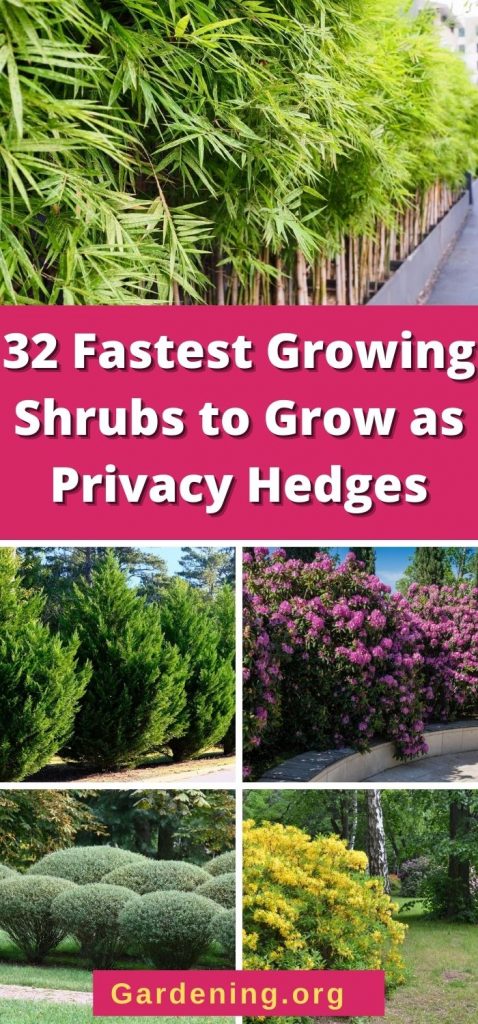
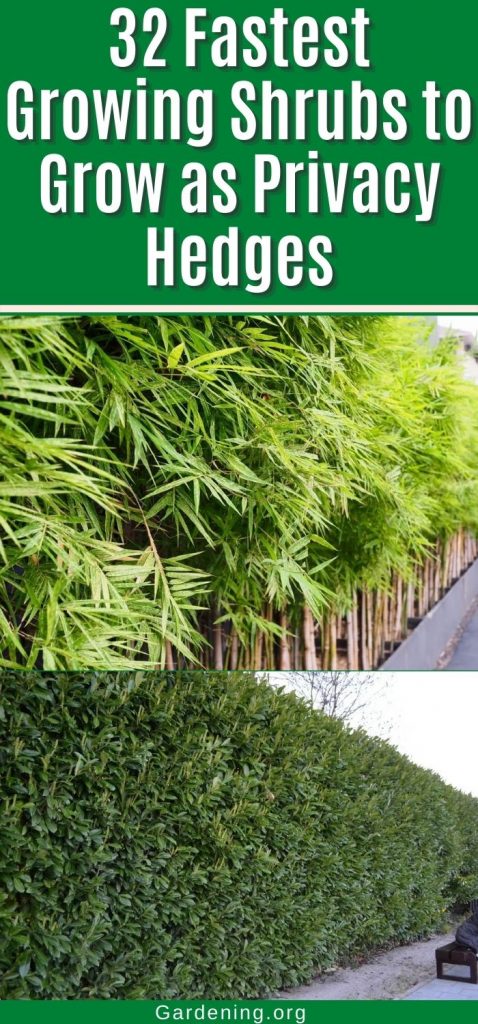

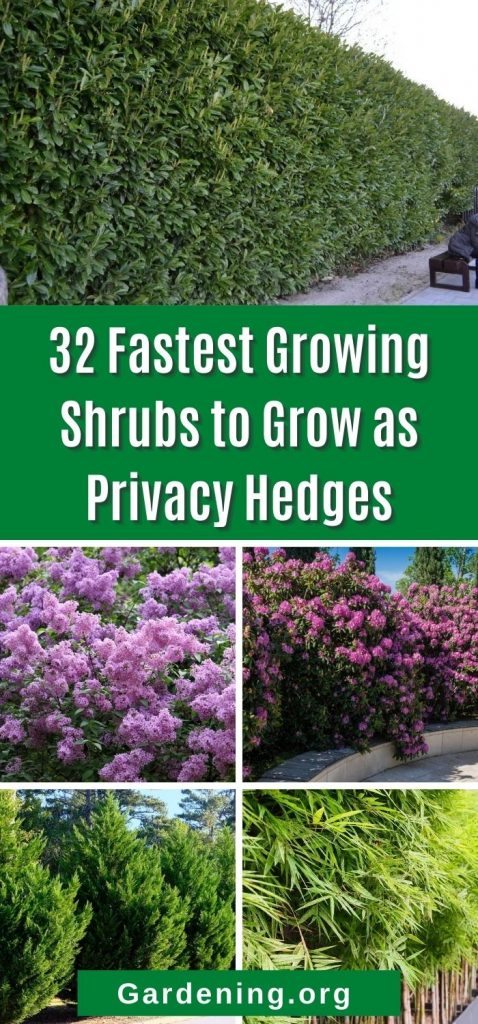






























![Greenwood Nursery/Live Trees - American Pillar Arborvitae Tree + Thuja Occidentalis - [Qty: 1x Quart Pot] - (Click for More Options/Quantities)](https://m.media-amazon.com/images/I/51-T2v3x5HL._SL160_.jpg)














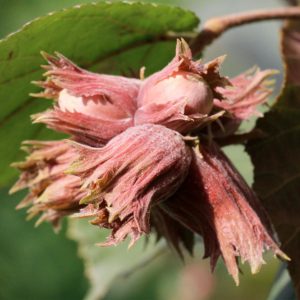
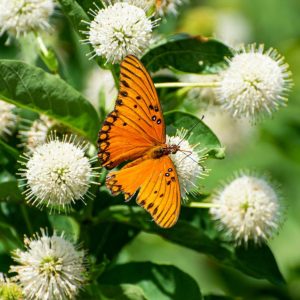
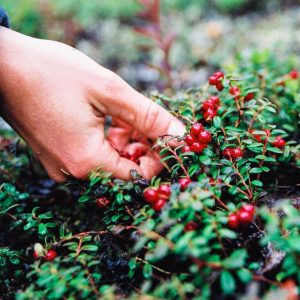
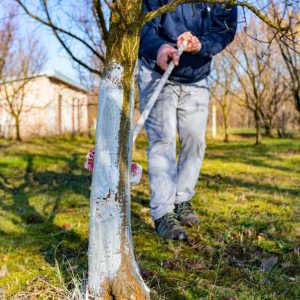
Leave a Reply